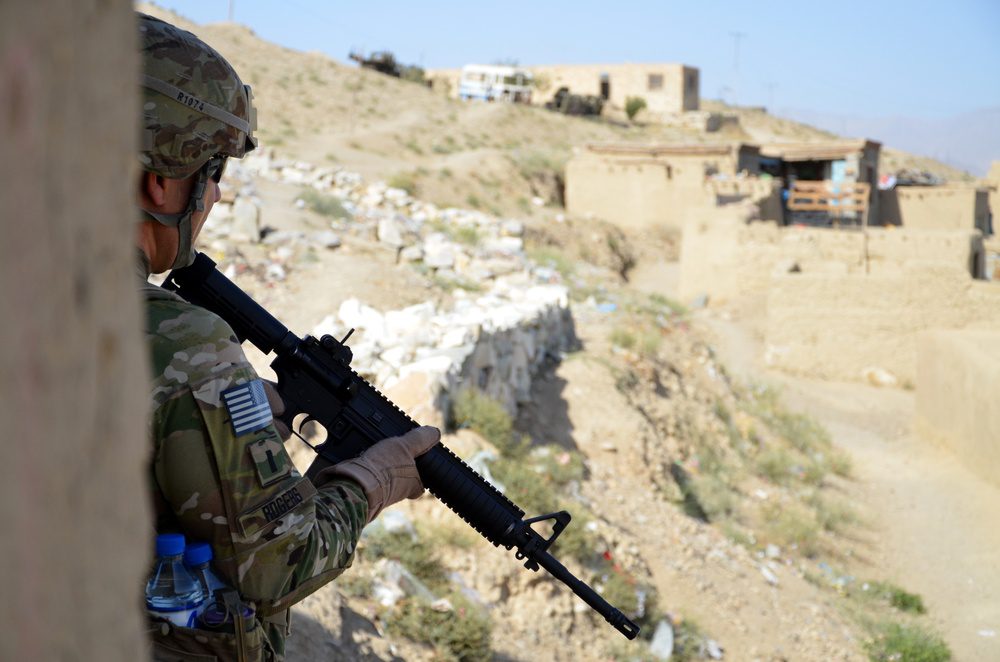PTSD Awareness Month: How to Heal our Heroes
June is PTSD Awareness Month, which means there is no better time than now to shed light on the courageous but often silent battles our Veterans fight after service. Post-Traumatic Stress Disorder (PTSD) is a complex and debilitating condition that affects millions worldwide, and most notably our service members. This month, Charlie Mike hopes to raise awareness, provide insights, and offer support to those Veterans impacted by PTSD. With our therapeutic equine and Canine Battle Buddies programs, we strive to provide true healing to Veterans who suffer from the unseen wounds of combat. Read on to learn more about PTSD in the Veteran community and how you can help those struggling with it.
The Connection Between Veterans and PTSD
PTSD is infamously tied to the Veteran community due to the nature of their military service and exposure to combat. Studies indicate that approximately 11% – 20% of Veterans who served in Iraq and Afghanistan develop PTSD, and the numbers may be even higher among Veterans from previous conflicts. The disorder can significantly impair their overall well-being, relationships, and quality of life.

Studies indicate that approximately 11% – 20% of Veterans who served in Iraq and Afghanistan develop PTSD.
On top of that, Veterans with PTSD often face unique challenges that exacerbate their condition. They may struggle with the transition from military to civilian life, difficulty finding employment, strained relationships, and co-occurring substance abuse disorders. The stigma surrounding mental health issues can also deter Veterans from seeking help, prolonging their suffering. For these reasons, PTSD is more common in Veterans than almost any other demographic.
What PTSD Does to the Brain
Traumatic experiences like combat have a profound impact on the structure and function of the brain. The amygdala, responsible for processing emotions and fear responses, becomes hyperactive in individuals with PTSD. This leads to an exaggerated fear response, triggering intense emotions and flashbacks associated with the traumatic event.
The hippocampus, responsible for memory formation and retrieval, also undergoes changes after trauma. In individuals with PTSD, the hippocampus tends to be smaller, affecting the ability to differentiate past memories from present experiences and contributing to intrusive memories and nightmares.
Symptoms
The symptoms of PTSD can be grouped into four main categories.
- Re-experiencing symptoms include intrusive memories, flashbacks, and nightmares related to the traumatic event. These symptoms can be triggered by reminders or triggers that resemble the original trauma.
- Avoidance symptoms involve efforts to avoid situations, people, or places that may remind the individual of the trauma. This can lead to social isolation and withdrawal.
- Cognition and mood symptoms include negative changes in thoughts and mood, leading to persistent negative beliefs, distorted thoughts about oneself or the world, and a diminished interest in activities once enjoyed.
- Hyperarousal symptoms manifest as increased irritability, difficulty sleeping, hypervigilance, and exaggerated startle responses.
Treatment
Fortunately, there are several treatment options available for individuals with PTSD. One of the most effective approaches is psychotherapy, specifically cognitive-behavioral therapy (CBT) and eye movement desensitization and reprocessing (EMDR). CBT helps individuals identify and challenge negative thoughts and beliefs associated with the trauma. EMDR combines exposure therapy with rapid eye movements to help process traumatic memories and reduce distress.
Medication can also be used as part of the treatment plan for PTSD. Selective serotonin reuptake inhibitors (SSRIs), commonly used as antidepressants, have been found to be effective in reducing symptoms associated with PTSD. These medications help regulate neurotransmitter levels in the brain, improving mood and reducing anxiety.
In addition to therapy and medication, self-help strategies can also play a crucial role in managing PTSD symptoms. These strategies may include regular exercise, relaxation techniques, and engaging in activities that promote a sense of calm and well-being. Building a strong support network and seeking assistance from Veteran organizations like Charlie Mike can provide valuable hope, emotional support, and understanding. At Charlie Mike, we offer Veterans equine therapy and companion dogs because we believe these types of programs provide long-lasting healing. In fact, studies have found significant decreases in PTSD symptoms in Veterans after therapeutic horse riding treatments and significant decreases in PTSD symptoms after getting a dog.

Studies have found a significant decrease in PTSD symptoms in Veterans after just 6 weeks of therapeutic horse riding treatments.
Supporting Loved Ones with PTSD
Supporting a loved one experiencing PTSD requires patience and empathy. Here are some ways Charlie Mike recommends helping someone with PTSD.
- It is essential that you educate yourself about PTSD and its symptoms to gain insight into what your loved ones may be going through. Reading pages like this one is a good start.
- Listen attentively and validate their experiences without judgment.
- Encourage open communication and let them know you are there to listen whenever they are ready to talk.
- Be mindful of potential triggers and create a safe and calm environment for them.
- Encourage self-care practices and assist them in finding appropriate professional help, such as therapists or support groups.
- Offer practical assistance, like helping with daily tasks, and be understanding if they need to take breaks or avoid certain situations.
- Above all, be a steady source of support and remind them that their journey towards healing is not one they have to face alone.




